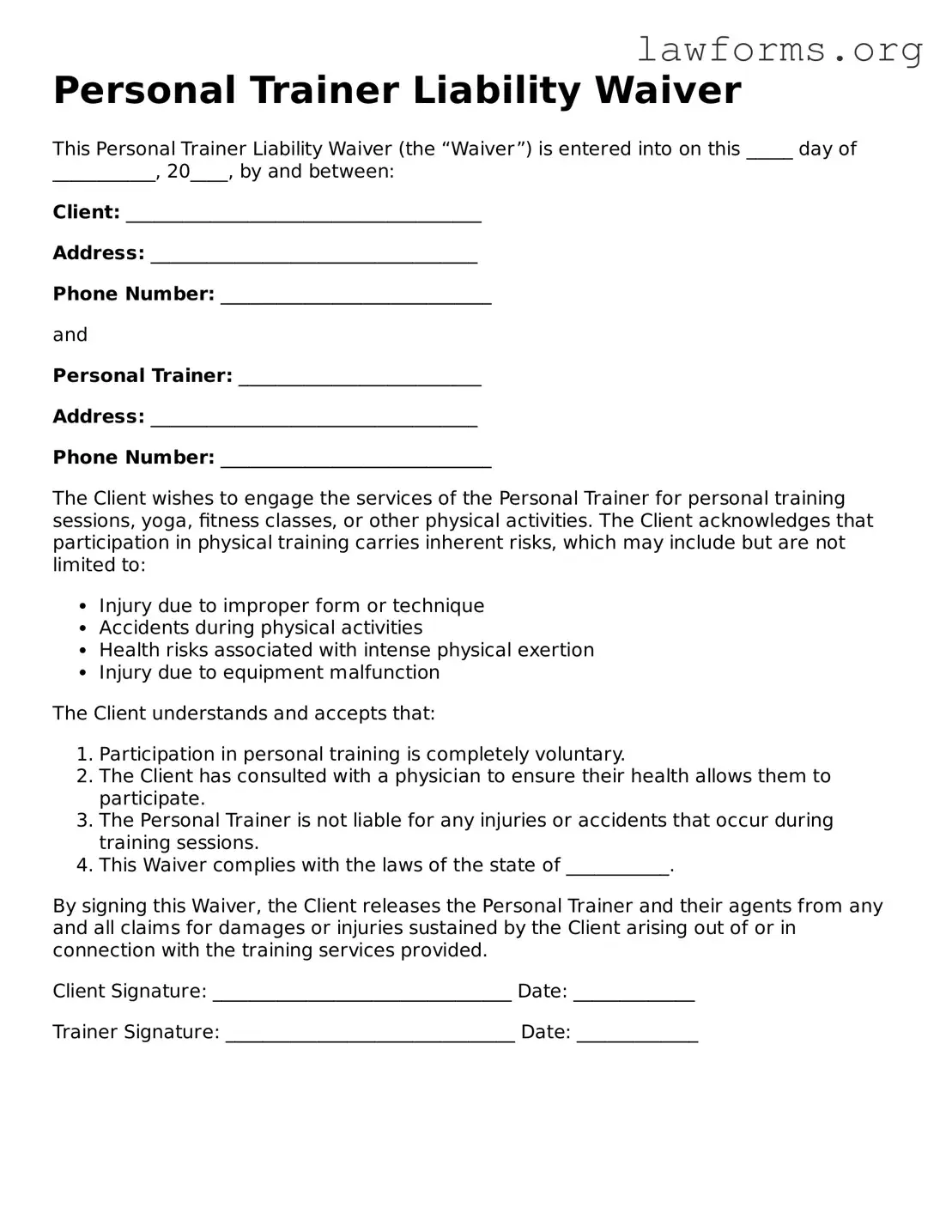Personal Trainer Liability Waiver
This Personal Trainer Liability Waiver (the “Waiver”) is entered into on this _____ day of ___________, 20____, by and between:
Client: ______________________________________
Address: ___________________________________
Phone Number: _____________________________
and
Personal Trainer: __________________________
Address: ___________________________________
Phone Number: _____________________________
The Client wishes to engage the services of the Personal Trainer for personal training sessions, yoga, fitness classes, or other physical activities. The Client acknowledges that participation in physical training carries inherent risks, which may include but are not limited to:
- Injury due to improper form or technique
- Accidents during physical activities
- Health risks associated with intense physical exertion
- Injury due to equipment malfunction
The Client understands and accepts that:
- Participation in personal training is completely voluntary.
- The Client has consulted with a physician to ensure their health allows them to participate.
- The Personal Trainer is not liable for any injuries or accidents that occur during training sessions.
- This Waiver complies with the laws of the state of ___________.
By signing this Waiver, the Client releases the Personal Trainer and their agents from any and all claims for damages or injuries sustained by the Client arising out of or in connection with the training services provided.
Client Signature: ________________________________ Date: _____________
Trainer Signature: _______________________________ Date: _____________
